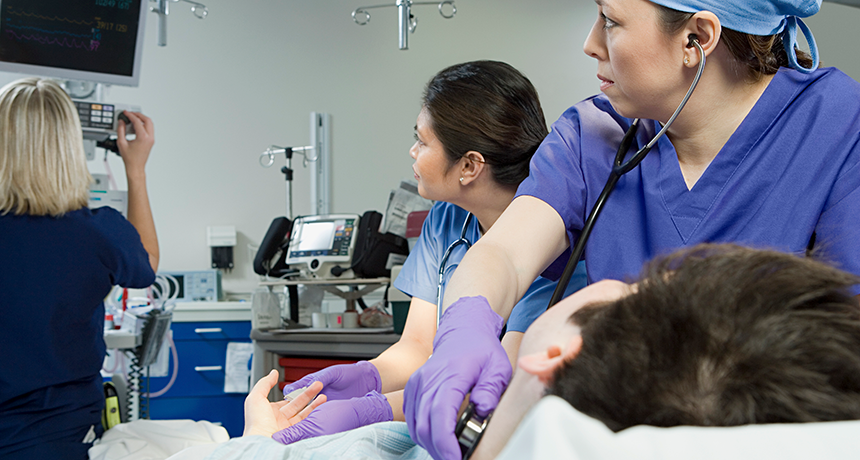antibiotic A germ-killing substance, usually prescribed as a medicine (or sometimes as a feed additive to promote the growth of livestock). It does not work against viruses.
bacteria (singular: bacterium) Single-celled organisms. These dwell nearly everywhere on Earth, from the bottom of the sea to inside other living organisms (such as plants and animals).
casing (n.) Some structure that encloses the potentially fragile working parts of a device, such as a cellular phone. It affords those internal parts protection by fully covering, or encasing, them. (in food science) The outer skin or material used to hold — or encase — the meat and other ingredients used to make a sausage.
E. coli (short for Escherichia coli) A common bacterium that researchers often harness to study genetics. Some naturally occurring strains of this microbe cause disease, but many others do not.
infection A disease that can spread from one organism to another. It’s usually caused by some type of germ.
microbe Short for microorganism. A living thing that is too small to see with the unaided eye, including bacteria, some fungi and many other organisms such as amoebas. Most consist of a single cell.
molecule An electrically neutral group of atoms that represents the smallest possible amount of a chemical compound. Molecules can be made of single types of atoms or of different types. For example, the oxygen in the air is made of two oxygen atoms (O2), but water is made of two hydrogen atoms and one oxygen atom (H2O).
MRSA An abbreviation for methicillin-resistant Staphylococcus aureus. Methicillin is a widely used antibiotic. And S. aureus is a bacterium that can cause boils, food poisoning, toxic-shock syndrome and more. These bacteria sicken (and sometimes kill) by releasing potent natural poisons into the body, called toxins.
nanoparticle A small particle with dimensions measured in billionths of a meter.
oxygen A gas that makes up about 21 percent of Earth's atmosphere. All animals and many microorganisms need oxygen to fuel their growth (and metabolism).
particle A minute amount of something.
polymer A substance made from long chains of repeating groups of atoms. Manufactured polymers include nylon, polyvinyl chloride (better known as PVC) and many types of plastics. Natural polymers include rubber, silk and cellulose (found in plants and used to make paper, for example).
polyurethane An often elastic plastic made from crosslinked chains of molecules.
quantum dot A nanoparticle of semiconducting material (meaning one with dimensions measured on the scale of billionths of a meter). It is inserted into cells, organisms or electronic materials, where it can be used as a label (tag) or to turn trigger some function (such as the production of sterilizing chemicals).
semiconductor A material that sometimes conducts electricity. Semiconductors are important parts of computer chips and certain new electronic technologies, such as light-emitting diodes.
Staphylococcus aureus (also known as staph) A species of bacteria that is responsible for a number of serious human infections. It can cause surface abscesses, or boils. If it gets into the bloodstream, where it can be carried throughout the body, it may also cause pneumonia and infections of the joints or bones.
strain (in biology) Organisms that belong to the same species that share some small but definable characteristics. For example, biologists breed certain strains of mice that may have a particular susceptibility to disease. Certain bacteria or viruses may develop one or more mutations that turn them into a strain that is immune to the ordinarily lethal effect of one or more drugs.
ultraviolet light (abbreviated UV light) A type of electromagnetic radiation with a wavelength from 10 nanometers to 380 nanometers. The wavelengths are shorter than that of visible light but longer than X-rays.
World Health Organization An agency of the United Nations, established in 1948, to promote health and to control communicable diseases. It is based in Geneva, Switzerland. The United Nations relies on the WHO for providing international leadership on global health matters. This organization also helps shape the research agenda for health issues and sets standards for pollutants and other things that could pose a risk to health. WHO also regularly reviews data to set policies for maintaining health and a healthy environment.








